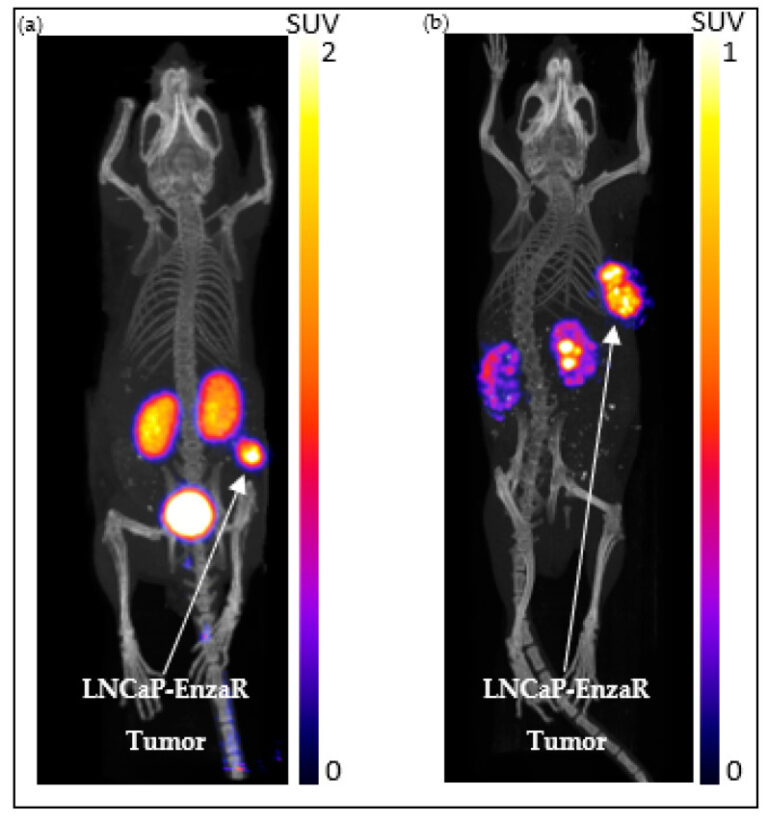Accelerator-Based Production of Scandium Radioisotopes for Applications in Prostate Cancer: Toward Building a Pipeline for Rapid Development of Novel Theranostics
In this study by Meier et al., the β-cube and the γ-cube have been used to visualize and evaluate new theranostic agents labeled with 43Sc and 47Sc and their use in pre-clinical evaluation and treatment of prostate cancer.
Research question
In the field of nuclear medicine, the β+ -emitting 43Sc and β− -emitting 47Sc are promising candidates in cancer diagnosis and targeted radionuclide therapy (TRT) due to their favorable decay schema and shared pharmacokinetics as a true theranostic pair. Additionally, scandium is a group- 3 transition metal (like 177Lu) and exhibits affinity for DOTA-based chelators, which have been studied in depth, making the barrier to implementation lower for 43/47Sc than for other proposed true theranostics. Before 43/47Sc can see widespread pre-clinical evaluation, however, an accessible production methodology must be established and each isotope’s radiolabeling and animal imaging capabilities studied with a widely utilized tracer.
Experiment
The synthesis of 43Sc has been executed via the 42Ca(d,n)43Sc reaction. An 18 MeV biomedical cyclotron, which had been converted to support solid targets, has been used to produce 43Sc. The chemical separation and purification of 47Sc had been done through the NatTi(γ,p)47Sc reaction. This was followed by the radiolabeling of PSMA-617 with 43Sc and 47Sc. Subsequently, In Vivo imaging of LNCaP-ENZaR tumor xenografts in mouse models with both 43/47Sc-PSMA- 617 was carried out.

Results
The production of 43Sc via the 42Ca(d,n)43Sc reaction was found to be feasible using a deuteron-capable medical cyclotron. Radioactivity was readily produced at a level capable of supporting pre-clinical studies with the addition of an easily fabricated beam stop modification. Similarly, 47Sc was shown to be readily producible with the NatTi(γ,p)47Sc reaction at a linear accelerator, with off-site production proving to be no obstacle for a pre-clinical study. 43Sc and 47Sc produced through these methods were successfully used for labelling PSMA-617 at specific activities appropriate for preliminary in vivo studies. Clear detection of LNCaP-r tumors was possible with both 43Sc-PSMA-617 PET and 47Sc-PSMA-617 SPECT imaging.
These preliminary findings exhibit 43Sc/47Sc as a promising theranostic pair. Through the experimentally demonstrated pipeline defined by this publication, 43Sc/47Sc is easily adaptable to the pre-clinical space. As such, this theranostic pipeline will be utilized to vastly expand upon the dataset presented in this publication through the full-scale investigation of 43Sc/47Sc-PSMA-617 with subsequent expansion to the utilization of scandium theranostics with other DOTA-based tracers.
